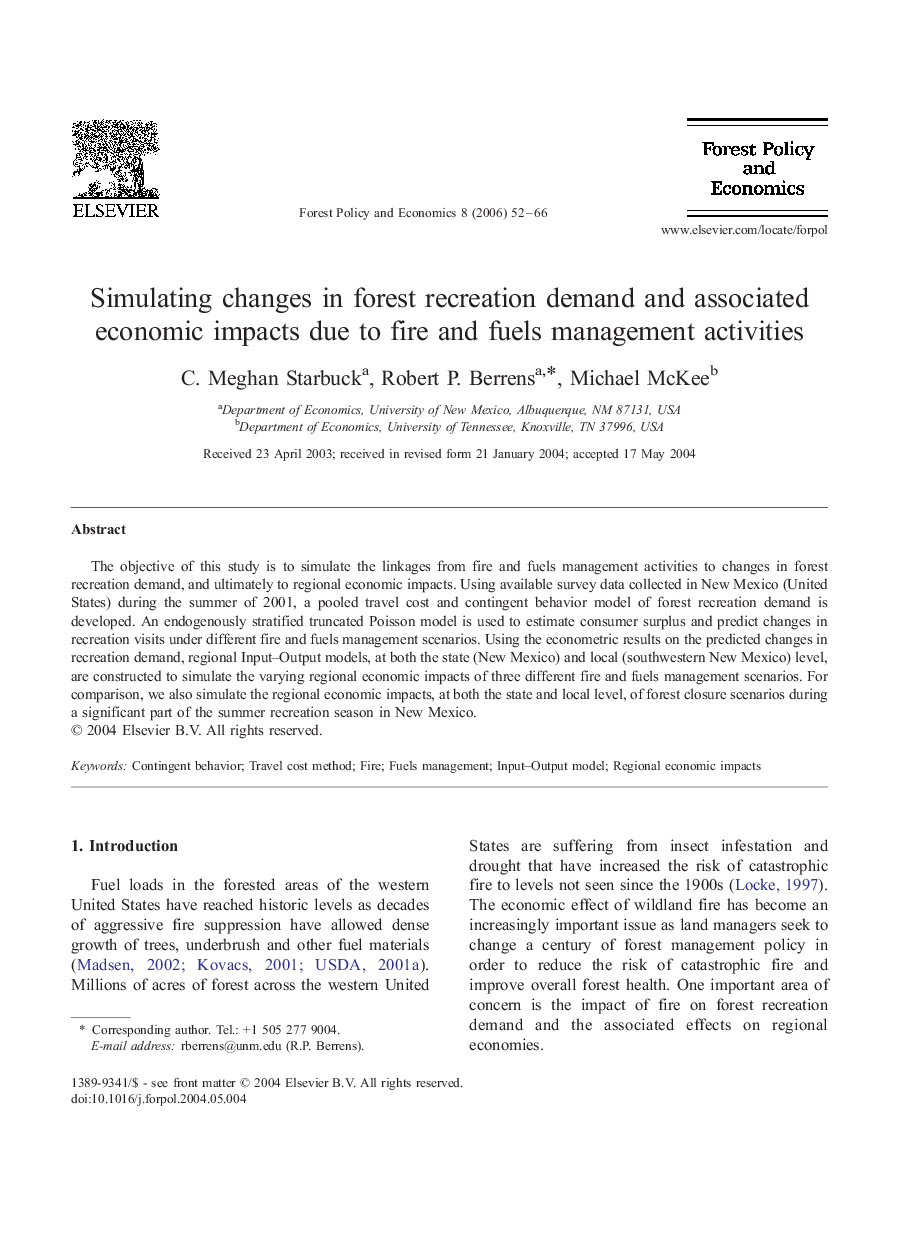| Article ID | Journal | Published Year | Pages | File Type |
|---|---|---|---|---|
| 91710 | Forest Policy and Economics | 2006 | 15 Pages |
The objective of this study is to simulate the linkages from fire and fuels management activities to changes in forest recreation demand, and ultimately to regional economic impacts. Using available survey data collected in New Mexico (United States) during the summer of 2001, a pooled travel cost and contingent behavior model of forest recreation demand is developed. An endogenously stratified truncated Poisson model is used to estimate consumer surplus and predict changes in recreation visits under different fire and fuels management scenarios. Using the econometric results on the predicted changes in recreation demand, regional Input–Output models, at both the state (New Mexico) and local (southwestern New Mexico) level, are constructed to simulate the varying regional economic impacts of three different fire and fuels management scenarios. For comparison, we also simulate the regional economic impacts, at both the state and local level, of forest closure scenarios during a significant part of the summer recreation season in New Mexico.
